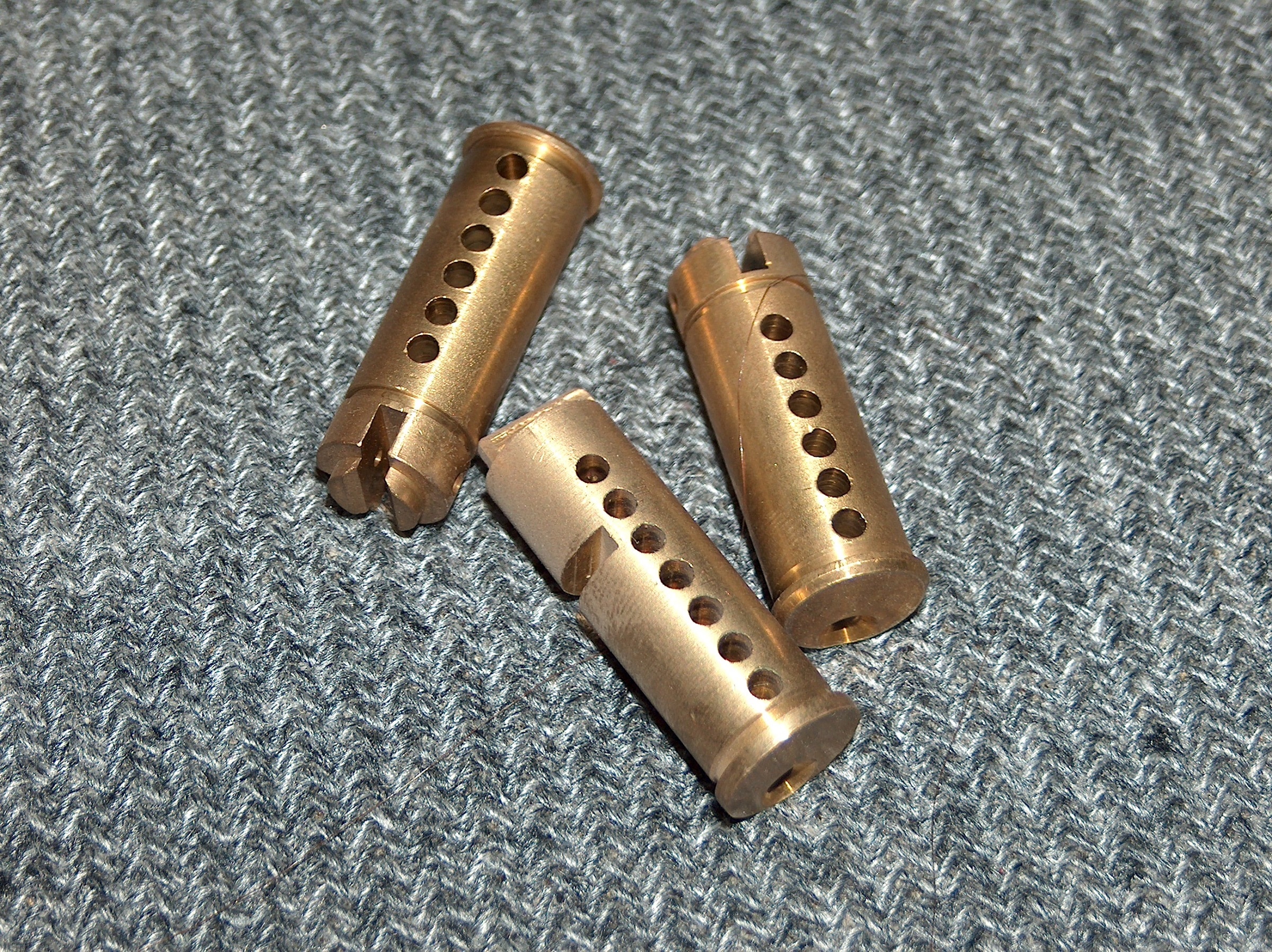Cleaning Blind Holes
When cleaning blind holes, parts typically will need to be positioned in specific orientations to ensure that these holes fill and drain adequately during processing.
A “blind hole” is a hole which has only 1 point of liquid entry, and is created when a hole is drilled that does not extend through the opposite side of the material. As such, liquid can enter or exit the hole only from one end. If a part with blind holes is lowered into a cleaning fluid with the hole facing upwards, the hole will certainly fill with cleaning fluid, and will be ultrasonically cleaned. However, when the part is removed from the cleaning fluid to be transferred into a rinse tank, the cleaning fluid is not drained from the hole. Cleaning fluid is then transferred from the ultrasonic cleaning tank to the rinsing tank which will contaminate the rinsewater faster, a condition commonly referred to as detergent drag-out. Also, since the hole will also not drain when removed from the rinse tank, drying of this hole will require extended periods of time since a puddle of liquid requires significantly longer drying times than parts having thin layers of water.
Drag-out is especially critical to avoid when trying to achieve zero-residue cleaning results, since detergent residues in the rinse water will produce spots on the parts after drying, similar to detergent spots found on dishes in a dishwasher. Although there are methods to address this condition, such as the addition of extra rinse tanks, they will add cost to the equipment, and the consumption of deionized water will increase as well.

If the blind holes are facing the bottom of the cleaning tank, the hole will never fill with cleaning fluid, preventing ultrasonic cleaning action in this area due to air entrapment, a condition which is covered in another document in our Technical Info section. Ultrasonic cleaning will not occur in any areas which have entrapped air.
The best possible part orientation when cleaning blind holes is to position the part in such a manner that the holes will be aligned horizontal when lowered into the ultrasonic cleaning tank. This will allow the cavity to fill with cleaning fluid, and will also permit draining of the hole when parts are removed from the cleaning bath. Since rinsewater will also drain from the hole, drying efficiency will improve.
Unfortunately, there are part designs which have blind holes drilled on different planes or directions, making it virtually impossible to adequately address all holes equally. For these applications, the use of air knives can be incorporated to evacuate liquids from these holes prior to transferring them to neighboring tanks, or hand-held compressed air wands can be used on manually operated systems to perform the same function. Part positioning will still be required to minimize the amount of trapped liquids within the parts being cleaned.
During your discussions with Zenith, our engineers will evaluate your part designs to determine the best possible position for your part design, and will ensure that you are aware of the limitations of cleaning, if any exist. Ultrasonic testing of your parts will also be recommended to ensure that the system being delivered will be capable of exceeding your cleanliness requirements.

How to Clean Blind Holes
Make Sure Holes Fill and Drain Adequately During Submersion and Lifting
Holes should NOT Face the Tank Bottom to Prevent Air Entrapment
Holes should NOT Face Upwards, which Yields Drag-out and Drying Inefficiency
Use Compressed Air to Remove Liquids if Trapped in Holes.
Always Try to Orient Holes Horizontally.

